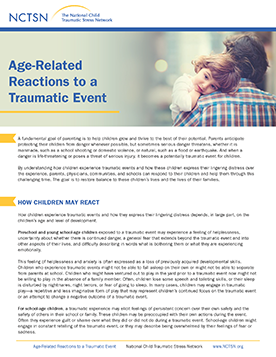
Age-Related Reactions to a Traumatic Event
Describes how young children, school-age children, and adolescents react to traumatic events and offers suggestions on how parents and caregivers can help and support them.
Winter storms are bad weather that generates precipitation at low temperatures such as snow, sleet, and freezing rain. Winter storms can range from light snow flurries to a blizzard, which is a long-lasting storm with very strong winds and intense snowfall. Because strong winds can carry heat away from the body, it may often feel colder outside during a storm than the temperature would indicate, called the wind chill. Risks due to winter storms can include traffic accidents on icy roads, heart attacks from shoveling snow, or hypothermia from prolonged exposure to the cold.
Being prepared beforehand is the best way to help children and family members stay safe during a winter storm. To improve their preparedness, families should:
Knowing what to do during a winter storm can help families stay safe. Consider the following:
During a winter storm watch, families should:
During a winter storm warning, families should:
After a winter storm, most families will recover and be able to return to their normal routines rather quickly. Most children will demonstrate resilience after a winter storm, however, some children may react differently if they were injured in a car accident or experienced the loss of a loved one or pet and may need additional grief support to help them adjust.
Below are resources to support children, families, and communities recover after a severe winter storm.

Describes how young children, school-age children, and adolescents react to traumatic events and offers suggestions on how parents and caregivers can help and support them.
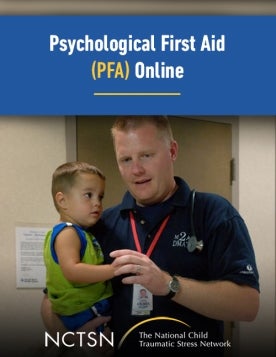
Includes a 5-hour interactive course that puts the participant in the role of a provider in a post-disaster scene. This course is for individuals new to disaster response who want to learn the core goals of PFA, as well as for seasoned practitioners who want a review.

Ofrece ideas de actividades para padres y cuidadores cuyas familias se están refugiando en el lugar, sin electricidad y recuperándose de un huracán u otro evento.

Helps child welfare agencies support children and youth during and after natural disasters. This toolkit is for child welfare staff, supervisors, and administrators who work with and on behalf of children, youth, and families who experience a natural disaster.

Helps juvenile justice agencies support children and youth during and after natural disasters. This toolkit is for juvenile justice staff, supervisors, and administrators who work with and on behalf of children, youth, and families who experience a natural disaster.
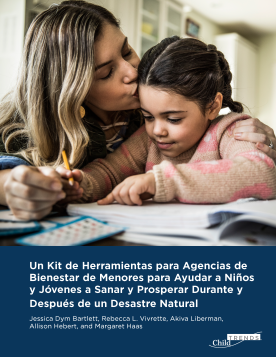
Ayuda a las agencias de bienestar infantil a apoyar a los niños y jóvenes durante y después de los desastres naturales.
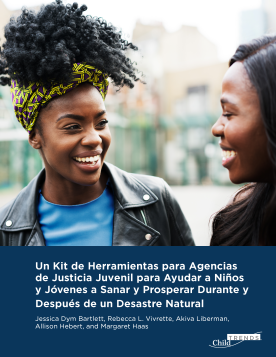
Ayuda a las agencias de justicia juvenil a apoyar a los niños y jóvenes durante y después de los desastres naturales.
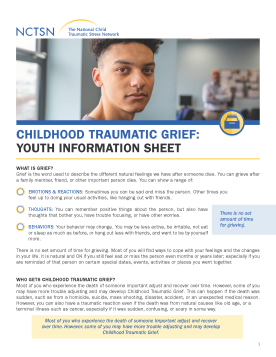
Offers information for youth to help them understand the differences between grief and traumatic grief, the signs and symptoms of traumatic grief in children and youth, and what to do to feel better.
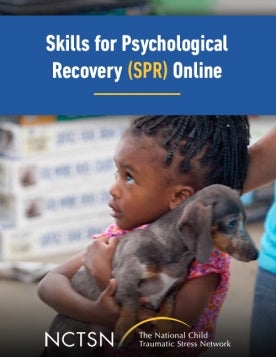
Aims to help survivors gain skills to manage distress and cope with post-disaster stress and adversity. This course utilizes skills-building components from mental health treatment that have been found helpful in a variety of post-trauma situations.
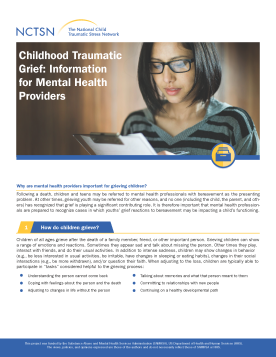
Offers information on why mental health providers are important for grieving children. This fact sheet outlines how children grieve, what Childhood Traumatic Grief is...
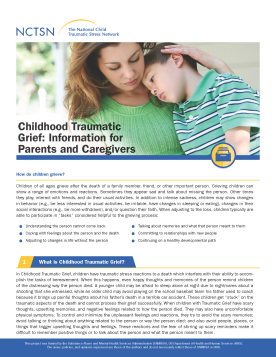
Provides information to parents and caregivers on Childhood Traumatic Grief.

Offers information on why pediatric providers are important for grieving children.